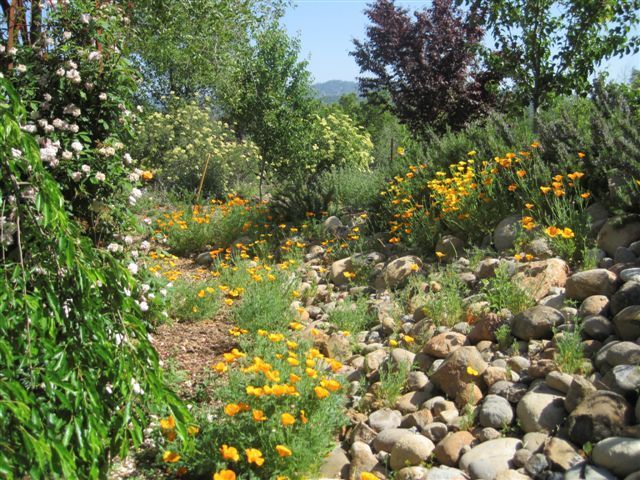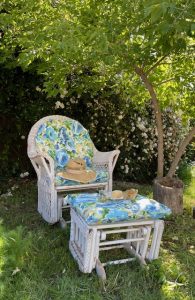Maybe you’ve given up on the idea of a lush flowering landscape in the Sierra Nevada foothills. Cottage gardens, we are told, are for areas with naturally occurring moisture during the summer. The East and Midwest, where they receive frequent rains, and the coastal West, with its moisture-laden foggy air, are better suited to supporting green growth.
There are many challenges to creating a cottage garden in the foothills. Water availability varies from year to year. Fire danger is a fact of life. The Central Valley and lower foothills bake in temperatures near 100 degrees or above during the summer and fall. Meanwhile, at higher elevations, thin soil does not support lush bloom.
However, a foothills-adapted, cottage-style garden is possible in the Sierra. Here, in time for fall planning and planting for next year’s garden, are some tips for creating your own cottage garden:
- Aim for spring. While moisture is available and temperatures are warming, plants grow and flower profusely. Autumn, when the soil is still warm and rains are expected, is a good time to plant shrubs and trees.
- Focus on perennials and self-seeding annuals. Plants that volunteer year after year, such as love-in-a-mist (Nigella damascena), California poppies (once established), and even miner’s lettuce (Claytonia perfoliata) provide sweeping patches of bloom. Climbing or rambler roses crawling over a fence create a waterfall of blossoms. Irises provide color that returns year after year. Forsythia, dogwood (Cornus spp), redbud (Cercis) and toyon (Heteromeles) all bloom exuberantly at various times of the spring.

- Choose a shady area for seating. A lounge chair under an arbor or a wicker rocking chair under a tree provides a place to enjoy nature’s show.
- Recognize that it will be ephemeral. As Wallace Stegner so famously wrote about the West, “You have to get over the color green; you have to quit associating beauty with gardens and lawns.” Know that sooner rather than later, lushness will fade into golden brown. Poppies are sunny and welcoming until they set seed, when they become brown and weedy. Rambler roses are breathtaking until they finish their once-in-the-spring bloom and turn wilted and forlorn.
- Once bloom ends, pruning begins. Be mentally prepared for massive pruning. In fire-prone California, our responsibility is to keep potential fuel to a minimum. Stalky blooms like iris, love-in-a-mist and poppies need to be cut and turned into mulch. Toyon and redbud can be trimmed into small trees, rather than left as shrubs. Climbing roses should be cut back from flammable fences and separated into individual plants. Prune branches from roofs, clean gutters of leaf debris and remove brown, dry vegetation everywhere.
It will be different from an English cottage garden. However, with adaptation to the realities of the California foothills, a cottage garden can be yours.
Rebecca Miller-Cripps is a University of California Cooperative Extension Master Gardener of Tuolumne County.

